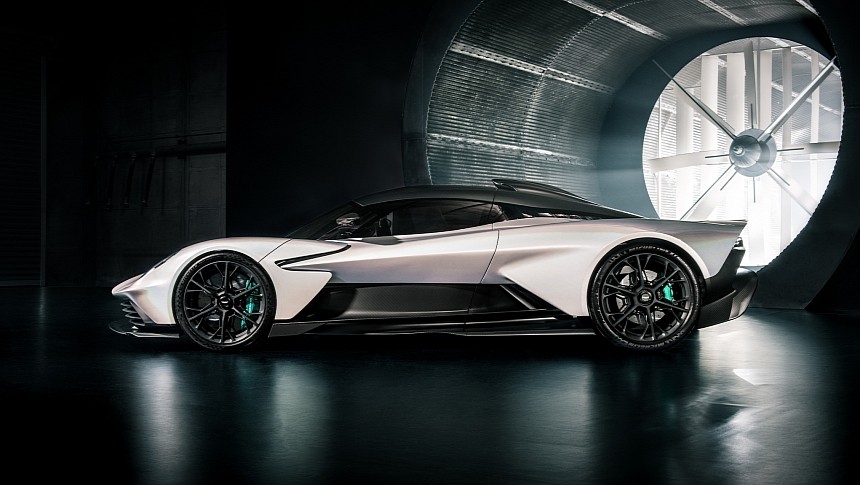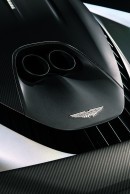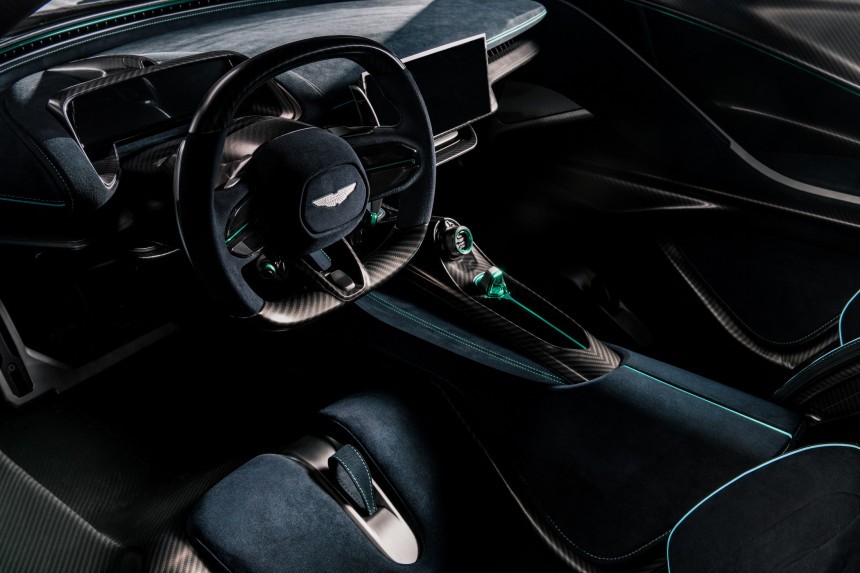The Aston Martin Valhalla is the car that we have been waiting for for ages. It has been in development for years, it showed up in James Bond two years ago, we have been told it should enter production this year. But it didn't. Now we are told that the development of the F1-inspired upcoming model has shifted up a gear. Hopefully, it is real this time.
This is a 'see it to believe it' kind of car. Slotting below the super-expensive Valkyrie, the Valhalla is still in development under the supervision of Aston Martin Performance Technologies. Every stage is backed up by the expertise of the Aston Martin Armco Cognizant Formula One team, which currently sits in the fourth place in the Constructors’ Championship. The F1 team assists with dynamics, aerodynamics, and materials.
The Aston Martin Valhalla stands as a mid-engine driver-focused supercar. 90% of the dynamic characteristics and vehicle setup have been completed in the simulator. The final development phase was completed in the road world, on both road and track. The F1 drivers Fernando Alonso and Lance Stroll gave a helping hand when it came to the calibration of the supercar.
The cabin will come with a setup that will offer race car level control. A false floor, which also integrates electronic modules, will position the driver’s heels in a raised position. Meanwhile, the carbon fiber bucket seat can be reclined to a greater angle to help the driver sit in a position that is similar to that of the F1 drivers.
The Valhalla showed up briefly, sitting in the wind tunnel, in the James Bond film 'No Time to Die' back in 2021. However, the car was not used in any way in the movie. It was just a clear confirmation that the model has been aerodynamically optimized in the wind tunnel.
The carmaker reveals that, similar to an F1 car, the Valhalla uses all elements of the body shape to generate downforce and minimize drag. But, because the road-legal car does not have to comply with the restrictions imposed by the F1 regulations. So, it is getting the fully active aerodynamics system at both the front and rear end of the car for a total of over 600 kilograms (1,323 pounds) of downforce at 240 kph (150 mph).
The Valhalla features a carbon fiber monocoque structure. It was a challenge for the team to create a body with maximized stiffness, yet minimal weight, with no compromise on precision.
Aston Martin’s supercar is powered by a bespoke twin-turbo flat-plane V8 engine, working alongside three e-motors, with two of them mounted on the front axle and another one integrated into the transmission, for a total of 998 horsepower (1,012 metric horsepower) in an all-wheel drive setup.
The model was supposed to enter production this year, but the date has been pushed back to 2024. The first running prototype will start road testing this year. Aston Martin originally planned to build only 500 Valhallas. High demand made them raise that number to 999.
The Aston Martin Valhalla stands as a mid-engine driver-focused supercar. 90% of the dynamic characteristics and vehicle setup have been completed in the simulator. The final development phase was completed in the road world, on both road and track. The F1 drivers Fernando Alonso and Lance Stroll gave a helping hand when it came to the calibration of the supercar.
The cabin will come with a setup that will offer race car level control. A false floor, which also integrates electronic modules, will position the driver’s heels in a raised position. Meanwhile, the carbon fiber bucket seat can be reclined to a greater angle to help the driver sit in a position that is similar to that of the F1 drivers.
The Valhalla showed up briefly, sitting in the wind tunnel, in the James Bond film 'No Time to Die' back in 2021. However, the car was not used in any way in the movie. It was just a clear confirmation that the model has been aerodynamically optimized in the wind tunnel.
The Valhalla features a carbon fiber monocoque structure. It was a challenge for the team to create a body with maximized stiffness, yet minimal weight, with no compromise on precision.
Aston Martin’s supercar is powered by a bespoke twin-turbo flat-plane V8 engine, working alongside three e-motors, with two of them mounted on the front axle and another one integrated into the transmission, for a total of 998 horsepower (1,012 metric horsepower) in an all-wheel drive setup.
The model was supposed to enter production this year, but the date has been pushed back to 2024. The first running prototype will start road testing this year. Aston Martin originally planned to build only 500 Valhallas. High demand made them raise that number to 999.









